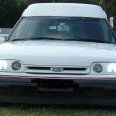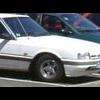-
Content Count
15,604 -
Joined
-
Last visited
-
Days Won
971
2redrovers last won the day on May 24
2redrovers had the most liked content!
About 2redrovers

-
Rank
Metalcraft Magician
- Birthday 05/10/1977
Profile Information
-
Location
Seaford Vic
-
Images and videos need to be hosted elsewhere and linked into your posts to show here. This is the same policy for everyone and has been from the beginning. It keeps our footprint down and therefore the costs involved in hosting the forum to a minimum. For mobile use, the tapatalk app is the easiest way to upload photos. I use an old version of the app which has no daily limits on posting etc, downside is I get no notifications but that doesn't matter much to me. For video, use YouTube to upload then post the link in your thread to share. You can also use other sites like imgur to host photos. There is a thread showing how to do this on the forum (look at Dean's signature for link)
-
We haven't had any made for a long time. If you are lucky, SPArKy_Dave might have one left but I think they might have gone a while back.
-

SUGGESTIONS WELCOME for an EA to FG forum sections, tips and how to's
2redrovers replied to deankxf's topic in AU HEY YOU Q&A and general info series 1,2 and 3
If it's easy enough to set up, then I'd say the three generations in their own sections would make searching/finding easier. There could be a rolling Q&A thread for people to use then copy paste into the relevant pages if desired. -
Worth all the effort I'd say (by which I mean everything) [emoji108]
-
Bit of nice aluminium for a heat shield maybe?
-
If it's "just" touching when you close it, then it's probably getting more than a touch while running. The vibration would crack the filler over time. Many ways to join a scoop, some better than others.
-
You haven't taken out the upright portion of the ribs so there would still be some strength there, maybe a bit reduced on the one side. Just go round and deburr the edges so you don't run the risk of slicing yourself open later. If it shows any signs of fatigue down the road, just add a plate across the rear section so it can't bend in the middle. [emoji106]
-
I'd be inclined to cut and splice them to alter the angle they meet the rear edge. So you get the wider space between them but still have solid support. I don't know if that's an option within your skill set, it's just how I'd go about the problem.
-
For more peace of mind about whether you sealed the holes, get something like penetrol or similar wicking agent. Squirt a bit around all the clips, repeat a couple of times over a couple of weeks and it should get a good barrier layer in there to help prevent (or at least dramatically slow) any corrosion.
-
Yeah.. What he said.. [emoji41][emoji108]
-
There is a handful of parts made by rare spares that are near correct, I can't say if those particular sills are one of them. Generally speaking they will be slightly thinner than the original steel and not as crisp in the folds. I've used quite a few RS panels and none have been spot on, some were downright atrocious. One of the good names would be patch maker but I'm not sure if they do that particular section. Bank on the inner sill being rotten too if the outside is rusted. Make sure the car is well supported on good jack stands before you start cutting, so the body doesn't sag when you take out the strength. Check the base of the windscreen (A pillar area, above the door hinges, under the guards ) to see there is any signs of rust from trapped water. I did an xy that had rotted a path from the windscreen down through the pillar and out the bottom of the sill due to poor water drainage. It took quite a bit of time and multiple sections to repair everything.
-
Alternatively look at plastic/rubber mud flaps to use as a shield.
-
Oooooh shiny bits.... Obviously the app was just dazzled by the esky's brilliance and couldn't see where it was supposed to upload the pics to [emoji16]
-
Yeah that's odd. When I went to click on one, it started to go to imgur but before it loaded an image it "crashed" back to the Tapatalk app.
-
The ZF grille on the floor is the one he wants to fit, so I guess he's going for originality too. Interesting about the plate, Greg and I were guessing and assumed it had two but one was covered under the black insulation bit. I'm not familiar with these as I've never had to work on them before.













